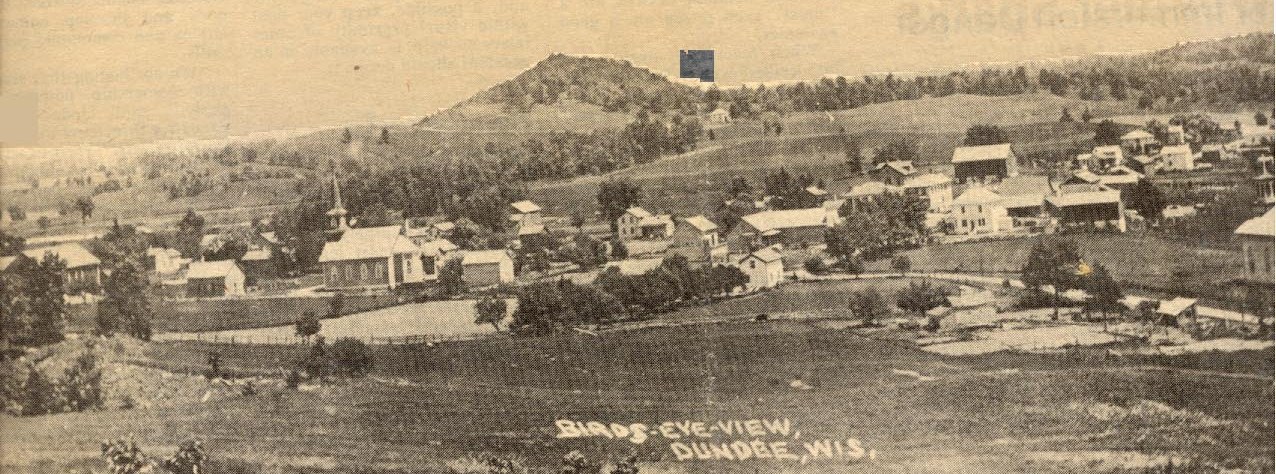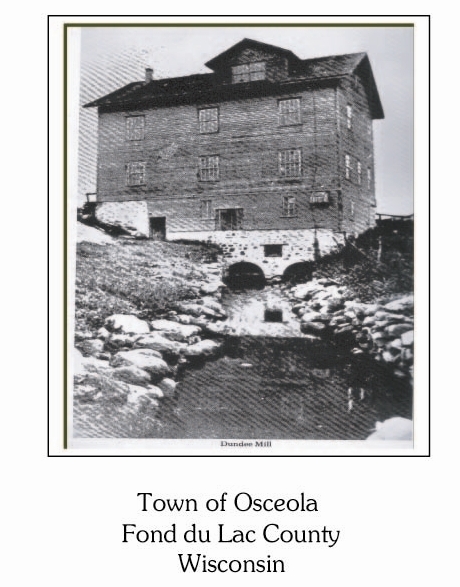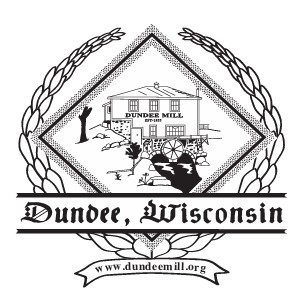In 1855, this heavily wooded area of Wisconsin began to be settled. E. M. McIntosh and Stephen Palmer saw
an opportunity to develop the area by building a sawmill along the East Branch of the Milwaukee River.
They dammed the stream, causing water to rise among five small kettle lakes into one bigger Long Lake.
They cut the millrace through the existing limestone to bring water to power their sawmill.
By 1860, wheat was grown around the Midwest. William and Leroy Palmer built a flour mill just south of the
sawmill. In the 1880's, cinch bugs, grain rust, smut, and depleted soil put an end to the wheat boom in
Wisconsin. But there was a need for a grist mill to grind coarse ground feed for cattle, pigs, and chickens.
The mill operator had only to move the grinding wheels a bit further apart.
Jacob Arimond built a general store and other businesses in Dundee in the late 1800's. Between 1898 and 1900
he acquired the mill, installed a large dynamo water-driven turbine, and began to generate electricity.
That endeavor failed, because he could not generate a current strong enough to reach neighboring towns.
However, the grist mill continued to serve local farmers.
In 1925 the three story mill burned down, but the farmers needed it, so in 1926, a new two story mill was
built on the original
foundation. Millers included John Schenk, Herman Molkenthein, Bill Little, Henry Kelling, Albert Koepke,
and Lloyd Murphy. Murphy sold White Swan flour and Master Mix feeds as well as grinding grist.
In the 1950's small country mills gave way to larger, more modern mills, and this mill closed. The building
fell into disrepair, and the property was overgrown. In 1990 some people around Dundee thought it could be
preserved. Mike and Monica Lavey purchased the Mill and surrounding acreage up to the dam and donated it to
the Town of Osceola, with the understanding that it was to always remain a park and a Town of Osceola
Historical Site. The Partners of the Dundee Mill and Park was formed-a dedicated group of people who
raised funds, worked to restore the building and grounds, and continue to maintain the property, entirely
with volunteers and donations. Artifacts from other mills and old farming equipment have been donated to
enhance our understanding of the way of life in the 1800's.
The Mill again produces electricity which is sold to the electric company to help pay a few bills. The Dundee
Mill gets no taxpayer funds. It has wide support from local residents and businesses, but everything depends
on volunteers and donations, large and small.
Memories from lifetime Dundee resident Leo Brown
This episode took place in approximately 1936 or 1937. Many years ago, my dad and I made a trip down to the
mill to have oats ground into feed for the cows. I, of course, had to go along because wherever my dad went,
I was not far behind. I had to be three or four years old. I was with Dad at the mill where we went every
week. As my mother told it, I must have been looking down in the hopper where Dad had emptied bag of grain.
He went out to the wagon for another bag of oats, and when he came to dump it in the hopper, I was down in
the hopper, crying like the devil, which was a good thing or I would have been covered with oats from the
next bag! No one would have known where I was because when the mill was running, it got pretty noisy in
there.Between my dad and the miller--whose name I think was Kehling--they got me out and no harm was done
to me. But I was awfully scared, and my dad was, too.
 1980 Aerial View of Dundee with hwy 67 coming in from the right.
1980 Aerial View of Dundee with hwy 67 coming in from the right.
Milling was discontinued in the 1950's and the building fell into a state of disrepair. In 1990 the
Town of Osceola purchased the mill property. The Partners of the Dundee Mill & Park was formed and the
property started being restored.
Copyright 1990-2025 - The Partners of the Dundee Mill & Park




